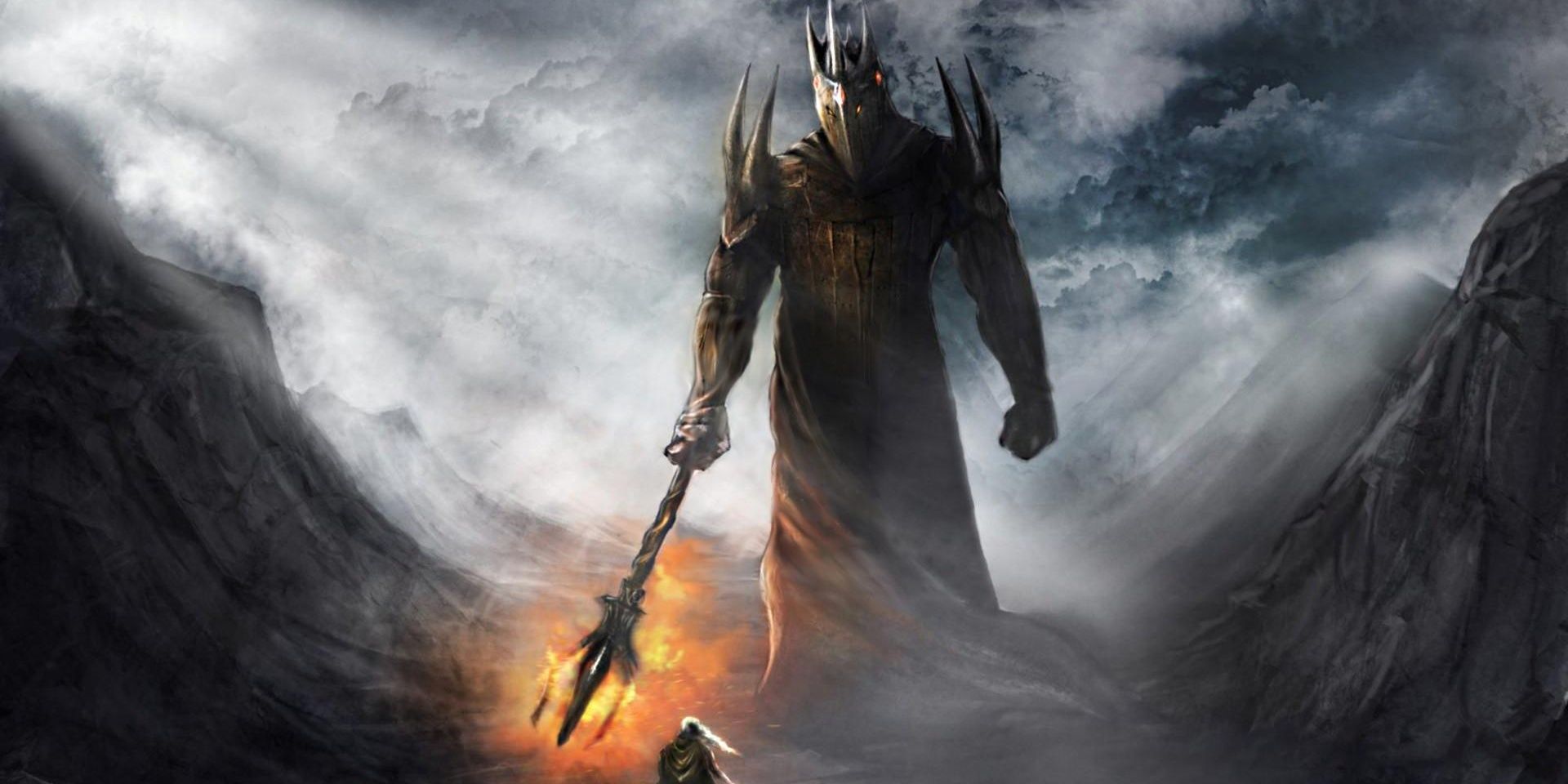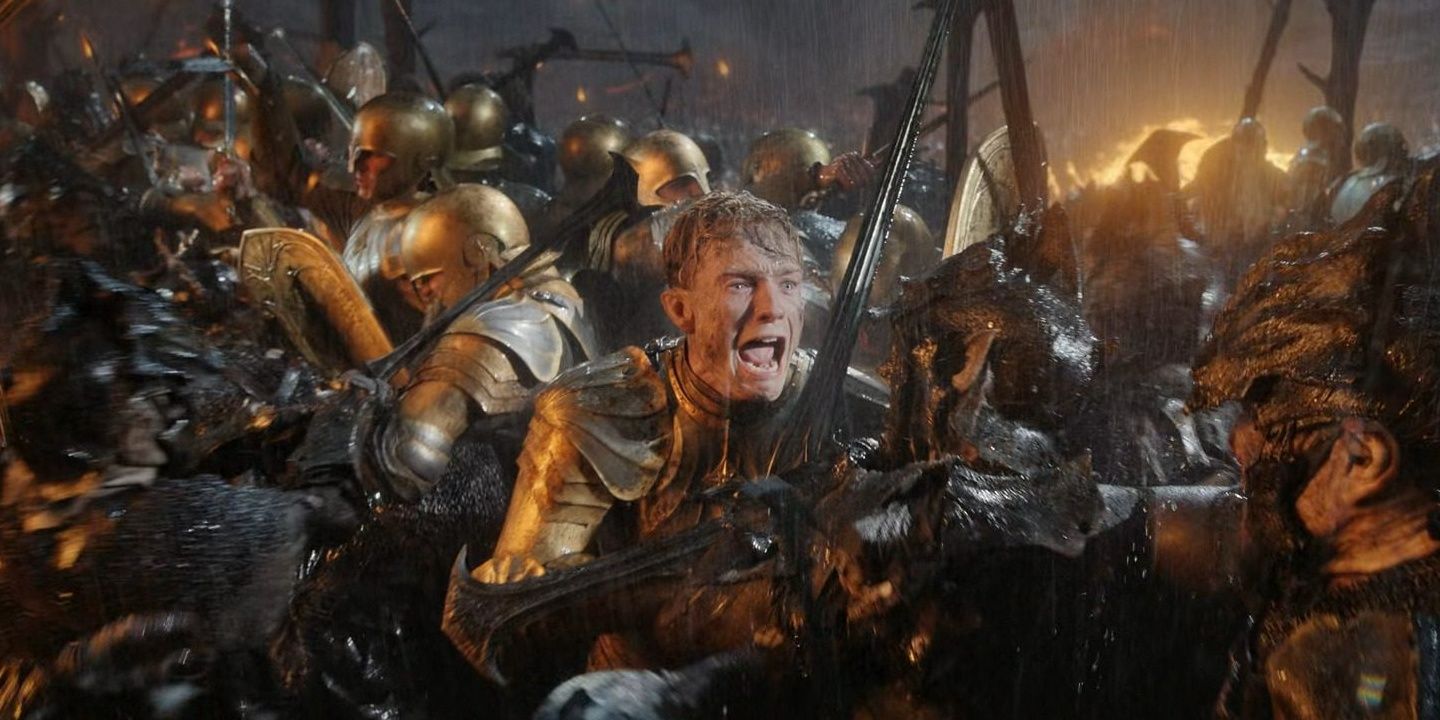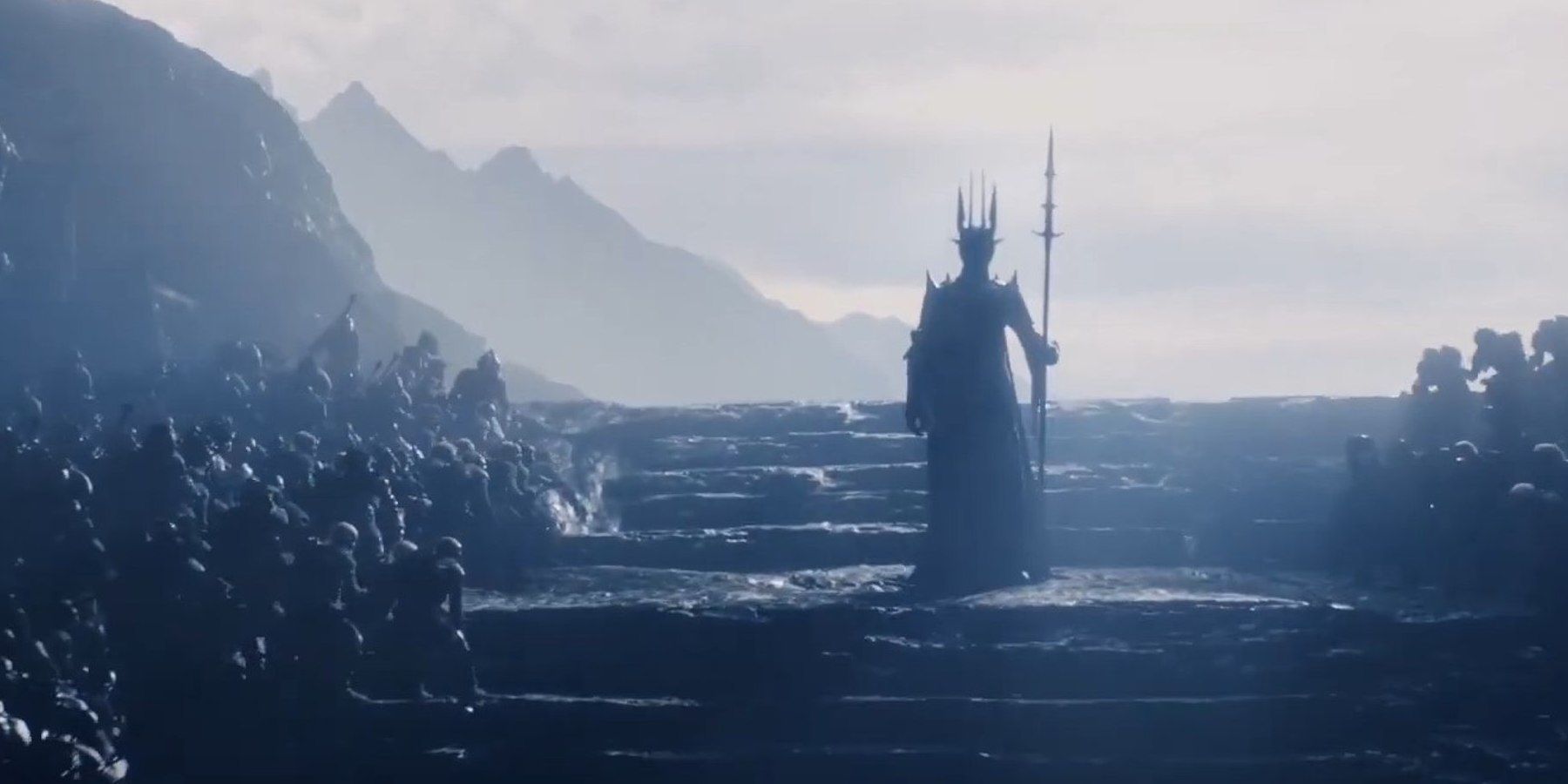Highlights
- Melkor, also known as Morgoth, was the first Dark Lord who rebelled against his creator and sought to corrupt and destroy all that he despised.
- Morgoth waged wars against the Elves and Men, destroying the Two Trees of Valinor and stealing the Silmarils, until he was ultimately defeated in the War of Wrath.
- After his defeat, Morgoth was captured and cast into the Timeless Void, marking the end of his dark reign, but according to a prophecy, he may return for the ultimate Battle of All Battles. Sauron, his servant, continued his mission in Middle-earth.
Although he is mentioned only briefly in The Lord of the Rings, Melkor (more commonly known as Morgoth) was actually the first Dark Lord, whose dark shadow over Middle-earth remained long after his existence. He was one of the Ainur, the first beings who were created by the demiurge Eru Ilúvatar before the beginning of the world. Although he was considered the “mightiest of the Valar”, he fell from glory when he disagreed with his creator’s vision for the world and rebelled against him by disrupting the Music of the Ainur. In Morgoth’s Ring, it is stated that Morgoth was “enraged by the mere fact of their existence”, and his ultimate goal was “solely the corruption, not control, of all that he despised”. He succeeded in influencing many of the Ainur to become his willing servants, including Sauron, who continues Morgoth’s legacy in The Lord of the Rings.
“Clad in ice and crowned with smoke and fire”, Morgoth kept threatening the Valar over time, who eventually retreated to Valinor in the continent of Aman after he destroyed the Two Lamps. This gave Morgoth free reign in Middle-earth, where he gradually gained control and built his strength. He waged wars against the Elves and Men for years, until he was confronted by the Valar one last time in the War of Wrath.
Who Fought Against Morgoth in the War of Wrath?
After populating the Middle-Earth with Orcs (mutilated and tortured Elves), werewolves, Balrogs (demons shrouded in flames) and other corrupted Maiar spirits, Morgoth proceeded to destroy the Two Trees of Valinor and steal the three precious Silmarils (jewels created by the Ñoldorin Elf Fëanor). These were mounted into the Iron Crown, which he used to declare himself as the “King of the World”. This led to a series of battles that are known as the War of the Jewels or the Wars of Beleriand, which included the First Battle, the Dagor-nuin-Giliath (the Battle Under the Stars), the Dagor Aglareb (the Glorious Battle), the Dagor Bragollach (the Battle of Sudden Flame), the Nirnaeth Arnoediad (the Battle of Unnumbered Tears) and, finally, the War of Wrath.
The largest battle to ever occur in Arda, the War of Wrath lasted for over 40 years. When Morgoth invaded Gondolin (a hidden Elven city located in the middle of Beleriand), a few of the inhabitants escaped, including a young Eärendil (a Half-elf mariner, who was also the father of Elrond) and his parents. Years later, he sailed to Valinor and pleaded with the Valar to help the Men and Elves in their fight against Morgoth. Although the Ñoldor had been cursed by the Valar for killing their kin (the Teleri) in their pursuit of the Silmarils, Eärendil's speech convinced the Valar to intercede. A great force marched across Beleriand to face Morgoth’s army in the plains of Anfauglith. Despite the number of Orcs, Balrogs and even dragons (including Ancalagon the Black) present, they were no match for the host of the Valar. The arrival of the Great Eagles finally brought about Morgoth’s defeat.
What Happened to Morgoth After the War of Wrath?
Morgoth fled to the deepest mines at his fortress of Angband, where he was eventually found and captured. He asked for pardon but the Valar bound him with the chain Angainor. His crown was beaten into a neck collar, and the Silmarils were recovered (although they got lost again for good shortly afterward). He was eventually “thrust through the Door of Night beyond the Walls of the World, into the Timeless Void”, which is outside Eä (the created world in J.R.R. Tolkien’s legendarium) altogether — thus, marking the end of his dark reign.
However, according to Tolkien’s unpublished manuscripts, the Second Prophecy of Mandos (the Doomsman of the Valar) states that Morgoth will return and initiate the Dagor Dagorath (the Battle of All Battles). His final fight against the Valar and their allies will end in his ultimate defeat, when he will be slain by Túrin Turambar. A Man of the House of Hador, Túrin had committed suicide in the First Age after his family was cursed by Morgoth. As written in The Book of Lost Tales, he is prophesied to come back to life, so he can kill Morgoth and avenge the deaths of the Children of Húrin as well as all the fallen Men. It should be noted, however, that this prophecy has not been included in the final publication of The Silmarillion by Christopher Tolkien.
On the other hand, Sauron managed to hide in Middle-earth when the Valar demanded that he return to Valinor for judgment. When they traveled back across the Great Sea, Sauron emerged and “claimed to be Morgoth returned” to continue his master’s mission: “he rose like a shadow of Morgoth and a ghost of his malice, and walked behind him on the same ruinous path down into the Void.”






